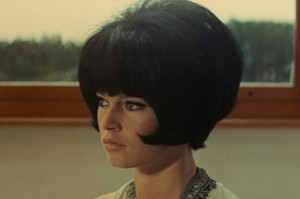The Secret of Kells

With the entertainment industry increasingly reliant on CGI, which direction now for traditional animation, asks Nik Glover.
The decision to instigate an Academy Award for Best Animated Feature in 2001 recognised the already crossing-over genre for what it was – an equal to live-action in artistic ambition and realisation. What is less clear is how the genre will cope with its relatively new place at the forefront of cinema.
Modern technology is delineating the genre as never before. CGI’s development has made what are traditionally billed as ‘live-action’ features like Avatar and Transformers more like cartoons than ever before. The ever-present need for filmmakers to create more eye-popping spectacles has seen animation seep into practically every frame of every big and medium budget picture released.
Such is the pervasivenes nature of CGI that film critics have even begun to note the existence of ‘CGI fatigue’ (I personally experienced it about an hour into watching Transformers 3). The mind dulls, the eyes begin to throb and any link between the part of the brain that registers the all-important ‘childlike wonder’ reflex shuts down.
The CGI boom has consequently forced de-jure animation into more and more experimental and self-referential flights of fancy – when ‘real’ films look more cartoonlike than cartoons, what happens to those illustrators and directors still claiming relevance for the artform?
Of course, animation can still be employed sensitively. It still maintains a capacity to really drive a narrative, rather than as a substitute for the lack of one. Richard Linklater’s Waking Life and A Scanner Darkly make effective use of rotoscoping to ‘animatise’ individual frames, blurring the lines between fantasy and reality. The animation itself can become a plot-point.
Aardman’s backbreaking style of production is almost as important to the reception of its films as their actual content. Knowing that every movement, every ripple of a pirate flag or shadow of exasperation that passes across Gromit’s face has been carefully realised through months of dedication is part of what makes the whole enterprise seem so appealing, and so British. Aardman exemplifies the new role Britain has had to build for itself within cinema, despite the marquee successes of tourist-board light entertainment like Four Weddings and a Funeral or Downton Abbey.
Even more than being upper-class and stiff-lipped, having a hobby that is anorak-ish and ‘finicky’ is intrinsically British. Aardman has single-handedly kept British animation afloat in the deepening ocean of American leftwing philosophy, as channelled by Pixar and Dreamworks. As with Brave, the Pixar/Scottish tourist board version of everything Caledonian and cheerily bloodthirsty, and France’s none-more-Gallic Belleville Rendez-Vous, animators across the world seem keen to make use of the medium to reconstruct the cultural consciousness of their homeland. The results are almost inevitably eccentric, comic and unthreatening, with the notable exception of Ari Folman’s Waltz With Bashir.
Ireland has produced a similarly idiosyncratic and equally effective piece of cultural animation. The Secret of Kells is quite simply one of the most beautiful pieces of cinema ever created. Criminally overlooked on release (Academy Award nomination aside) the film tells the story of the composition of the legendary Book of Kells, an early Christian illuminated manuscript, against the backdrop of the Viking invasion of Ireland.
The film is aimed resolutely at a young audience, with its 12 year old protagonist Brendan displaying the traditional teen traits of rebelliousness, passion and then repentance, while warring against his overbearing father and at the same time desperately trying to come to terms with the savaging of his lands by ghostly, murderous barbarians. The story is presented in glorious Celtic-ana, familiar to fans of Tolkien’s own illustrations to his tales of Middle-Earth, with an added Byzantine-Christian element – the Abbey of Kells has precipitously high walls, entrenching Brendan’s sense of isolation and imprisonment.

Outside, in the wild forest that his father is mortally afraid of, a wraithlike female child draws Brendan into a pre-Christian, pre-fallen world of innocent experience. The story has something of William Blake to it, as well as a lot of Tolkien and even shades of Iris Murdoch’s The Bell. Bizarrely, it would actually make an extremely inspiring film for young Christians, such is its romantic idealisation of a pre-mediaeval world.
In its refreshingly untouristy view of Ireland, The Secret of Kells offers a third way for animators. To find originality, by all means make use of the founding myths of civilisation and the art and music of legend. Just steer clear of green-lighting Disney’s ‘The Emerald Oisle’, starring Johnny Depp, with songs by U2.
Nik Glover
The Secret of Kells screens Sunday the 10th of February 11.30am @ FACT





